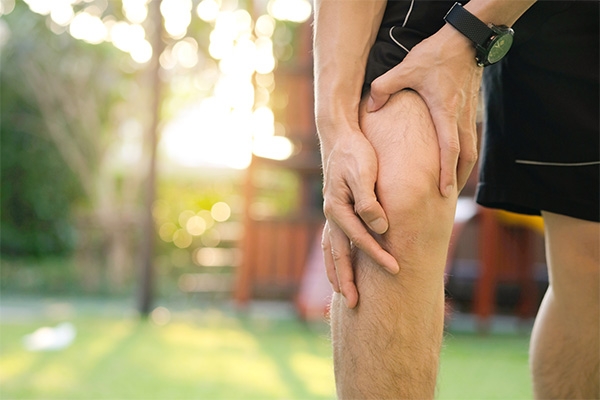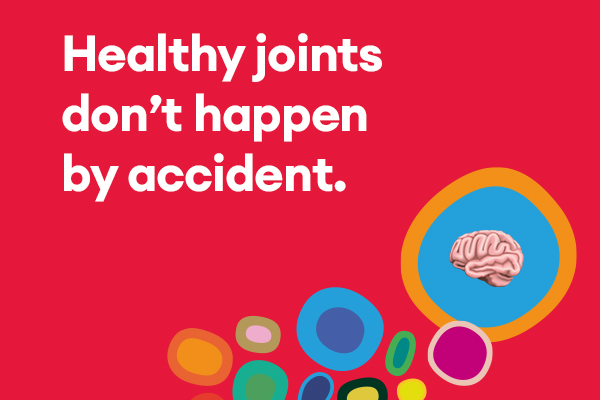Written by Medibank
November 2023
The anterior cruciate ligament (ACL) runs diagonally in the middle of the knee and provides rotational stability to the joint.
The ACL is put under a lot of pressure during high-intensity sports and can sprain or tear. However, building the right warm-up and strengthening exercises into your training routine can reduce your risk.
AFLW physio and researcher Mel Haberfield shares her top 5 tips to prevent ACL injuries.
.jpg)
1. An active warm-up is key
A proper warm up can reduce the chances of injury by up to 40 per cent. But the evidence shows it’s more than just a jog and some stretches.
“To prevent injuries, a warm-up should have exercise-based elements including a dynamic phase, and an agility and balance phase.
The dynamic phase should include between 6 to 10 active whole-body exercises that get the body warm and moving, for example, hamstring sweeps, open and close gates, and progressive sprints.
The agility phase should replicate the skills and movements you’re going to use when playing, particularly those movements where you are most at risk of injury,” says Mel.
To prevent ACL injuries, the three main movements to focus on are jumping and landing, particularly on one leg; deceleration or slowing down; and changing direction.
“If you practice these movements, you get better at them and you prepare your body for what you are about to do,” Mel concludes.
2. Build regular strengthening exercises into your routine
Along with a proper warm-up, building your strength is important to prevent ACL injuries.
Traditionally people focus on stretching during cool downs. According to Mel, you actually get more ‘bang for your buck’ in terms of injury prevention by working on your strength.
“It doesn’t need to be a lot it can be some very simple bodyweight exercises done on the field after training. And it’s a really nice way to cool down as a team,” she says.
The best areas to focus on to prevent ACL injuries are the major muscle groups in your legs, and around the hip and the knee: the quads, the glutes, the hamstrings and calf muscles.
3. Train like you play
“In community sport, a lot of people train at a really low intensity,” says Mel. “Then when they get to the game on Saturday they sprint around and play at a much higher intensity, and that’s when most injuries happen.”
“If you sprint on a Saturday, you need to sprint at training. If you tackle on a Saturday, you need to tackle at a training.”
4. Be consistent
A proper warm-up and strength program only work if you do them, says Mel. “We encourage people to do them at every training and every game. They don’t need to take an hour – they can be done in 10 minutes if you use the right program and you practice it.”
5. Find the right injury-prevention program for your sport
Every field-based sport is different. For example, AFL is a 360-degree sport where you need to tackle, and take contact in the air and on the ground, as such the agility aspects of warm-ups should be tailored to suit your sport.
You don’t need to reinvent the wheel, says Mel. There are existing warm-ups for every sport, for example, AFLW has the Prep-to-Play program.
Or check out the evidence-based active warm up and strength exercises on the @aclutd Instagram page.


No Gap ACL Reconstruction program
We’re working with participating surgeons at participating hospitals to deliver no gap ACL reconstruction procedures. Eligible members could pay no out-of-pocket costs^ for an ACL reconstruction procedure.
Read more about taking care of your joints
Looking for something else?
Visit Joint health for more information.
Things you need to know
^ There may be out-of-pocket expenses associated with outpatient appointments, such as your initial visit with a participating surgeon in their consulting rooms. An excess or per day payment may still be payable, depending on the product a member has chosen and whether they are claiming under their hospital cover for the first time in a calendar year.
References
Bruder, A. M., Donaldson, A., Mosler, A. B., Patterson, B. E., Haberfield, M., Mentiplay, B. F., ... & Crossley, K. M. (2023). Creating Prep to play pro for women playing elite Australian football: a how-to guide for developing injury-prevention programs. Journal of sport and health science, 12(1), 130-138.
Bruder, A. M., Patterson, B. E., Crossley, K. M., Mosler, A. B., Haberfield, M. J., Hägglund, M., ... & Donaldson, A. (2024). If we build it together, will they use it? A mixed-methods study evaluating the implementation of prep-to-play PRO: an injury prevention programme for women’s elite Australian football. British journal of sports medicine, 58(4), 213-221.
Patterson, B. E., Crossley, K. M., Haberfield, M. J., Mosler, A. B., Cowan, S. M., Lawrence, J., ... & Donaldson, A. (2024). Injury prevention for women and girls playing Australian Football: programme cocreation, dissemination and early adopter coach feedback. BMJ Open Sport & Exercise Medicine, 10(1), e001711.
Bruder, A. M., Crossley, K. M., Mosler, A. B., Patterson, B., Haberfield, M., & Donaldson, A. (2020). Co-creation of a sport-specific anterior cruciate ligament injury risk reduction program for women: a concept mapping approach. Journal of science and medicine in sport, 23(4), 353-360.
Crossley, K. M., Patterson, B. E., Culvenor, A. G., Bruder, A. M., Mosler, A. B., & Mentiplay, B. F. (2020). Making football safer for women: a systematic review and meta-analysis of injury prevention programmes in 11 773 female football (soccer) players. British journal of sports medicine, 54(18), 1089-1098.
While we hope you find this information helpful, please note that it is general in nature. It is not health advice, and is not tailored to meet your individual health needs. You should always consult a trusted health professional before making decisions about your health care. While we have prepared the information carefully, we can’t guarantee that it is accurate, complete or up-to-date. And while we may mention goods or services provided by others, we aren’t specifically endorsing them and can’t accept responsibility for them. For these reasons we are unable to accept responsibility for any loss that may be sustained from acting on this information (subject to applicable consumer guarantees).




